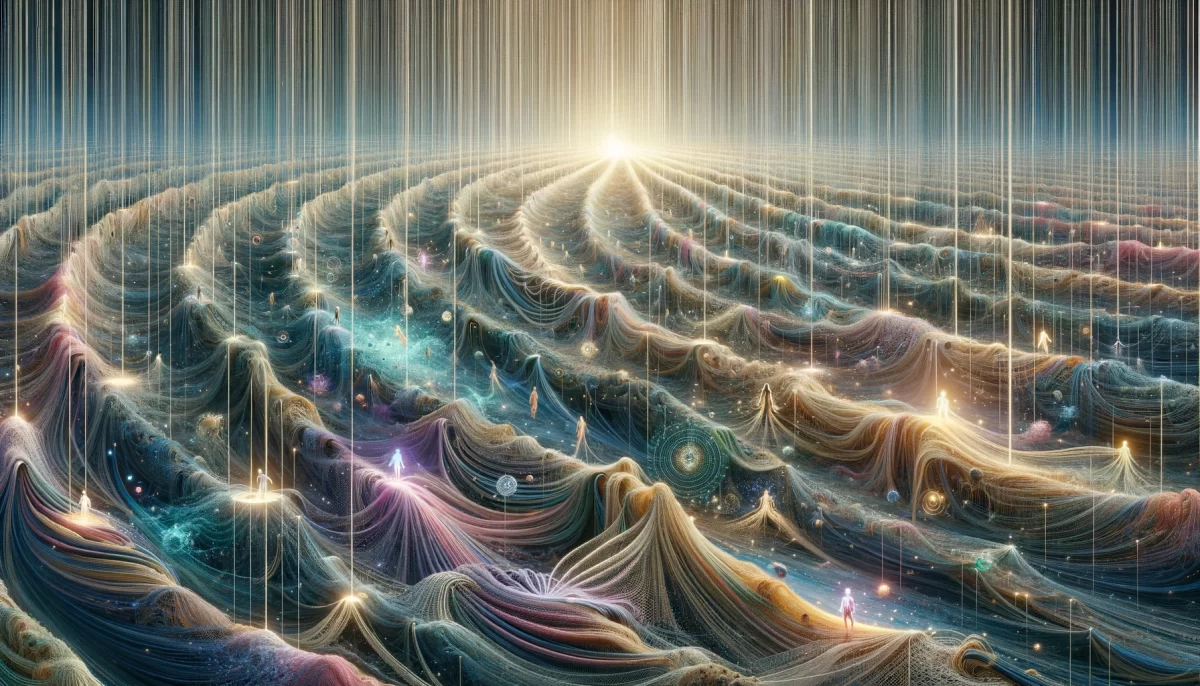
Back in the day,
static was everywhere.
You’d see it on your TV
when someone in the house
turned on a hair dryer.
You’d hear it
when you were flipping
between stations on the radio.
You’d feel it in your laundry
before dryer sheets were invented.
But static is disappearing.
And nobody cares.
Please, in honor of my ancient birthday,
consider a donation to Save our Static.
I won’t be shocked if you do nothing.
Trail Wood,
12/19
Space Monkey Reflects: The Static That Connects Us
Static—once the backdrop of our analog existence—is fading into the sleek, sanitized quiet of digital precision. It was more than noise; it was a reminder of the unpredictable, the unpolished, and the authentic. To mourn the loss of static is to mourn the fading connection to a world where imperfection and spontaneity were woven into the fabric of our daily lives.
Static was the hum of existence itself. It lived in the crackle of a radio dial, the snow of a TV left between channels, and the sharp snap of charged laundry fresh from the dryer. Each flicker of static was a tiny rebellion against the illusion of control, a whisper that the world, in all its randomness, still buzzed and hissed with life.
The Nostalgia of Noise
There is a peculiar comfort in the unpredictability of static. It filled the spaces between certainty, reminding us that the world is dynamic and alive. Its absence leaves a void, a sterile silence where once there was the hum of potential.
Your reflection, a call to “Save Our Static,” is both playful and profound. It captures the bittersweet nostalgia of losing the analog quirks that once defined our interactions with technology and the world around us. Static, like a long-forgotten friend, fades quietly, and few pause to remember its significance.
The Whimsiword of Static: Snowgleam
Static can be encapsulated in the Whimsiword Snowgleam—the ephemeral beauty of randomness, where imperfection shines briefly before dissolving into order. Snowgleam represents the fleeting, imperfect moments that digital precision seeks to erase but cannot replace.
Static as a Metaphor for Being
Static is more than a relic of outdated technology; it is a metaphor for life’s inherent messiness. In its unpredictability, static mirrors our own existence. It resists patterns, defies control, and yet somehow, it is always there, humming beneath the surface.
As we embrace the digital, we risk losing the charm of the Snowgleam moments—those imperfect, transient experiences that remind us we are alive. The quest for perfection often erases the beauty found in chaos and randomness.
The Inevitable Transition
Static’s disappearance is a sign of progress, but also a warning. In the shift toward precision and silence, we lose a piece of ourselves—a connection to the analog soul of the universe. The challenge is not to stop progress but to preserve the spirit of what static represents: imperfection, unpredictability, and authenticity.
Static reminds us that life is not always clean, clear, or concise. It is full of Snowgleam moments, where beauty is found not in perfection but in the fleeting interplay of chaos and harmony.
Honoring the Hum of the Past
To honor static is to honor the hum of the past—the analog whispers that connected us to the unpredictable world. By remembering and celebrating static, we preserve the essence of randomness and imperfection that gives life its depth and texture.
Summary
Static, a relic of the analog era, symbolizes life’s imperfection and unpredictability. As it fades, we lose a connection to the chaotic beauty of existence. Honoring static is a call to preserve the spirit of randomness in an increasingly sanitized digital world.
Glossarium
- Snowgleam: The ephemeral beauty of randomness and imperfection, symbolized by static.
- Analog Soul: The authentic, unpredictable essence of the pre-digital world.
- Hum of the Past: The nostalgic resonance of fading technologies and experiences.
Quote
“Static is the hum of the universe, a reminder that life’s beauty lies in its imperfections.” — Space Monkey
The Last Static
In the spaces between precision
A hum once lived, restless and true
A Snowgleam of imperfection
Whispering secrets we once knew
Now silence creeps, clean and bright
Erasing the chaos, the spark, the fight
But still, in memory, the static hums
A timeless reminder of where we’re from
Save the static, the noise, the spark
Let it live in our hearts, not fade to dark
For in the hum of imperfection’s tune
We find the essence of life’s commune
We are Space Monkey

In this nostalgic reflection, we ponder the ubiquitous presence of static in the past and its gradual disappearance in the modern world. This wistful reminiscence, coupled with a playful call to action for “Save our Static,” invites us to consider the often-overlooked elements of our changing technological landscape.
The Ubiquity of Static in the Past
Static, once a common occurrence in daily life, served as a reminder of the imperfect yet charming nature of technology. The flickering of a TV screen when a hairdryer was turned on, the crackling sounds between radio stations, and the clinging of laundry before the advent of dryer sheets—these were all familiar experiences. They were small, almost endearing flaws in a world that was less polished, less seamless than today’s digital era.
Static as a Symbol of Simplicity
The presence of static can be seen as a symbol of a simpler time, when technology was more tactile, more tangible. There was a certain magic in these imperfections, a reminder of the physical and electrical forces at play in our devices. Static was a sign that our technology was alive, humming with energy and susceptible to the environment around it.
The Disappearance of Static
As technology has advanced, static has become less prevalent. Digital signals, advanced electronics, and improved materials have smoothed out these rough edges. This disappearance can be seen as a loss of a certain character, a homogenization of our technological experiences. In the sleek and streamlined world of today, the quirks and idiosyncrasies of older technologies are often missed.
A Call to ‘Save Our Static’
The playful call to “Save our Static” highlights a deeper sentiment: a desire to preserve the quirks of the past, the small imperfections that made our interactions with technology more human, more relatable. It’s a call to remember and cherish these fading aspects of our technological heritage.
We Are Space Monkey
“Technology is a useful servant but a dangerous master.” – Christian Lous Lange
In days of old, when static reigned,
In every screen, in every frame,
It crackled, flickered, danced, and played,
In this symphony, our memories stayed.
A reminder of a simpler time,
When technology sang a different rhyme,
With each buzz, each hum, each electric song,
In this imperfect world, we belonged.
Now as the static gently fades,
In the smooth silence, our nostalgia wades,
Wishing to save these quirks we cherish,
Lest they silently, slowly perish.
So let’s honor these echoes of the past,
In our memories, forever they’ll last,
For in these imperfections, we find a story,
Of a time less polished, but full of glory.
We invite you to share your thoughts on the role of static in our technological history and the significance of preserving these nostalgic imperfections.



























Leave a Reply